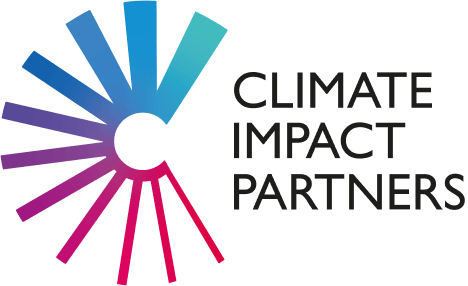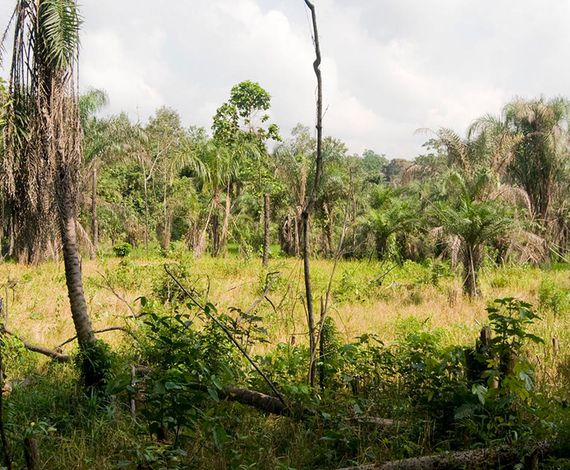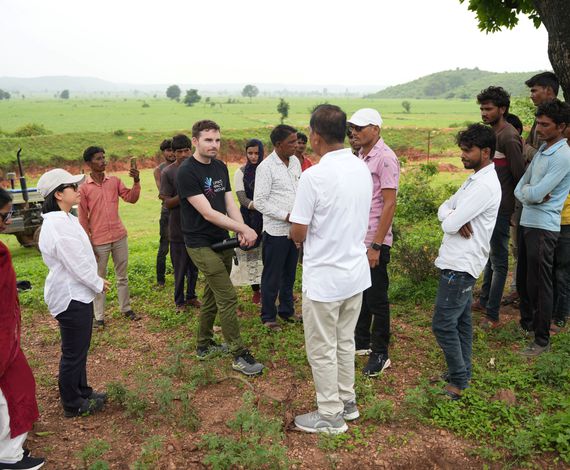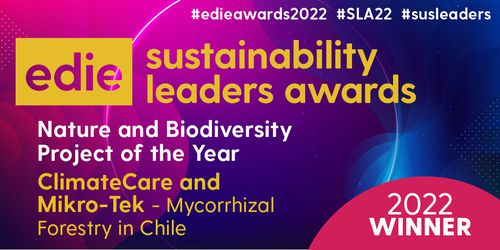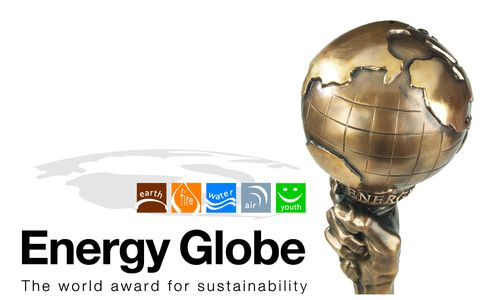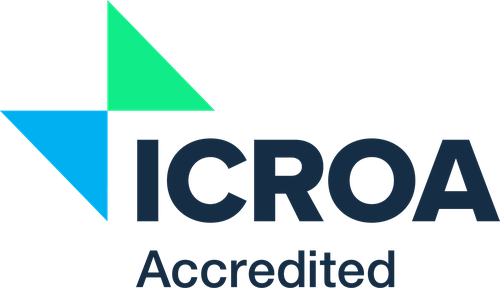Verra, the world's biggest certifier of voluntary carbon offsets, has introduced a new ‘Consolidated REDD Methodology’ to protect forests. The methodology includes a new approach to setting baselines for calculating emissions reductions from forest conservation activities – better aligning with the national accounting approaches under the Paris Agreement.
Delving into the details further, we speak to Hillary Navarro, Chief Communications Officer at Verra, and Ben Gatley, Head of Commercial Project Development at Climate Impact Partners.
What role does protecting forests play in tackling the climate crisis?
Ben: Understanding why we need to protect forests in the fight against climate change is an important starting point. Some data that really helps to put it into context for me is Project Drawdown’s findings that primary forests globally are estimated to contain 300 billion tonnes of carbon – just imagine if we allowed all those forests to be cut down.
In addition, carbon emissions from deforestation and associated land use change are estimated to be 10-15 percent of the world’s total emissions. It’s therefore no surprise that the Intergovernmental Panel Climate Change’s special report on Climate Change and Land, stated that “reducing deforestation and forest degradation rates represents one of the most effective and robust options for climate change mitigation, with large mitigation benefits globally.”
Unfortunately, we are in a world where deforestation is getting worse – with expectations that it is likely to increase to meet increased food production over the next decades. REDD (Reducing Emissions from Deforestation and Forest Degradation) projects are vital to keep forests standing and are one of the best ways to direct private sector funding to forest communities, take away the drivers of deforestation, and enhance sustainable forest management.
Why is the new REDD methodology significant?
Hillary: The new methodology is a transformative moment for the voluntary carbon market that will support a new era of global investment in protecting nature.
The updated methodology is significant because it includes a new approach to setting project baselines, which are used to calculate a project’s emission reductions under the landmark Verified Carbon Standard (VCS) Program. Additionally, for the first time, the methodology better aligns with national carbon accounting for forest conservation activities under the Paris Agreement.
In another first, Verra will lead and manage the baseline-setting process, using jurisdictional-level data that meet stringent requirements and a robust development process. The program will employ advanced remote-sensing technologies coupled with a thorough risk assessment to determine the expected deforestation for a project area, enabling the number of verified emission reductions from all projects in a jurisdiction to be consistent with jurisdictional-scale accounting.
This new approach ensures consistency, reduces the potential for any perceived or actual conflicts of interest at the project proponent level, and enables greater quality control while supporting government action. These changes will give buyers confidence in the ability of forestry conservation projects to make meaningful and credible contributions to climate action while supporting biodiversity and local communities.
Why have you released this new methodology?
Hillary: This updated methodology builds on a system that has already protected tens of thousands of hectares of the world’s forests and moved hundreds of millions of dollars into communities - the stewards of these places.
Verra released this new methodology because keeping forests standing remains vital to achieving global climate goals. Deforestation accounts for as much as a fifth of the world’s greenhouse gas emissions and carbon markets are the best and most readily available tool we have to protect forests.
The new methodology and module for Avoiding Unplanned Deforestation (AUD) activities will replace five separate VCS AUD methodologies – that are used by a substantial subset of REDD projects – with one methodology: the methodology for Reducing Emissions from Deforestation and Forest Degradation.
How long has it taken to create it?
Hillary: It has been under development since 2020 and is the result of collaboration and consensus-building across carbon market experts and stakeholders, with input solicited from our stakeholder mailing list of over 17,000 recipients and via our LinkedIn account of over 54,000 followers.
Why is it so difficult to deliver these forestry projects on the ground?
Ben: REDD projects are complex in design and implementation and to be successful each project must consider its location-specific challenges and risks. The baseline of a project is based on a counter-factual, i.e. an estimation of what is likely to have occurred in the absence of the project, which is calculated based on evidence of deforestation in areas with similar characteristics to the project area. But, by definition, a counter-factual cannot be certain. For any project, an independent auditor is required to investigate how a baseline has been set and whether it meets the requirements of the Verified Carbon Standard (VCS).
New applications of technology such as satellite imaging are enabling companies to get more accurate information about deforestation risks in a project’s reference area (the comparison site that is used to establish the baseline), and any actual deforestation at the project site. These tools will improve projects’ calculations of avoided emissions and of course the updated methodologies we are seeing today are vital too – evolving with the projects.
Why are REDD projects under so much scrutiny?
Ben: For context, I think it’s good to remember that the REDD framework was created by the United Nations Framework Convention on Climate Change (UNFCCC) to reduce deforestation in developing countries. The original intention of them was to accelerate national government action on deforestation, it accepts voluntary subnational implementation in the interim.
Most REDD projects have prevented deforestation. There will be some projects that have not delivered as intended, however, this represents a minority and should not undermine the impact these projects have.
As mentioned, these projects are complex to deliver and implement, which all adds to the scrutiny, including the all-important baseline calculation.
Under the new methodology, it will be standard for all projects to use a jurisdictional baseline as opposed to setting their own – which has been one of the biggest challenges of REDD projects. The jurisdictional baseline will make it easier to compare between projects and ensure consistency.
The baselines will be set by third parties who will be doing land use change mapping across entire countries to access historical deforestation over the last six years, then use the same methodology to assess the risk of deforestation across the country over the following six years.
All projects are expected to transition to the new methodology by 2025.
How will this new methodology address the common criticisms of REDD projects?
Hillary: Scrutiny of the voluntary carbon market is essential and necessary. It is part and parcel of a maturing and expanding market that has a critical role to play in ensuring a liveable future for our children. As an environmental non-profit, Verra’s mission is to ensure a habitable planet, doing everything we can to support a voluntary carbon market that helps us get there.
To address concerns toward emissions baselines, the methodology includes a new approach to calculating a project’s emissions reduction wherein Verra will now lead and manage the baseline-setting process through jurisdictional-level data, coupling sophisticated remote sensing with a thorough deforestation risk assessment. As a result, the expected deforestation for a project area will now be consistent with jurisdictional-scale accounting. Using a single deforestation dataset for the entire jurisdiction will ensure project baselines will no longer use reference regions to project future deforestation.
Verra’s stringent and rigorous development process included multiple rounds of public consultation, expert review, and validation and verification by third-party auditors to ensure the new methodology is as rigorous and robust as possible.
What does a high-quality REDD project look like?
Ben: As a starting point, high quality REDD forest conservation carbon projects should demonstrate the following characteristics:
- Additionality: the project should be achieving emissions reductions that would not have occurred in the absence of the project due to planned or unplanned deforestation.
- Baseline: the project should have a robust and transparent baseline of emissions from deforestation and forest degradation to accurately measure the emissions reductions of the project activities.
- Leakage: the project should monitor and account for unintended increases in emissions outside of the project area such as illegal logging shifting to the area just outside the project zone.
- Third-party verification: the project should have a transparent and robust monitoring, reporting, and verification system to ensure that the emissions reductions are accurately measured.
- Permanence: the project should manage a buffer pool of credits set aside to cover any unforeseen loss events and engage the community, so they are committed to the long-term stewardship of the forest carbon stocks.
- Co-benefits: the project should respect indigenous peoples' land rights, include the local communities in decision making, conserve precious biodiversity, and improved livelihoods based on sustainable income alternatives that do not rely on deforestation or forest degradation.
In addition to this, we implement an enhanced quality assurance process to assess areas such as country risk, legal or compliance concerns, and delivery risk.
Does this new methodology improve the measurement of impact beyond carbon?
Hillary: This methodology focuses on Greenhouse Gas accounting. However, Verra released updates to safeguards and sustainable development requirements in VCS version 4.5 and will be working on further updates in version 5.
In partnership with one of our global NGO partners, we continue to hold consultations focused on learning from and engaging with Indigenous Peoples and local communities to inform Verra’s Nature Framework and its safeguards. Eight sessions will be completed by the end of 2023. We will use the learnings from this consultation to further update the social and environmental safeguards across all Verra programs.
In 2024, we plan to develop a tool to facilitate the identification of social and environmental risks in Verra projects, supported by guidance for implementing and assessing safeguards and other core requirements such as grievance redress mechanisms, transparent benefit sharing, and Free, Prior, and Informed Consent (FPIC).

The new methodology is a transformative moment for the voluntary carbon market that will support a new era of global investment in protecting nature.

Unfortunately, we are in a world where deforestation is getting worse. REDD projects are vital to keep forests standing and are one of the best ways to direct private sector funding to forest communities, take away the drivers of deforestation, and enhance sustainable forest management.
Latest News

Groundbreaking AI platform launched to deliver real-time, personalised climate policy insights to corporates
Supported by Climate Impact Partners and with investor funding, Maiven, a new AI platform, provides personalised, real-time climate policy insights.
Read more
Climate Impact Partners Comments on SBTi's Corporate Net-Zero Standard V2
Climate Impact Partners' CEO, Sheri Hickok, shares views on SBTi's draft Corporate Net-Zero Standard V2, now open for consultation.
Read more
Climate Impact Partners Comments on ICVCM approving three clean cooking methodologies
Lilian Kagume, head of health and livelihoods, comments on the latest update from the ICVCM.
Read more